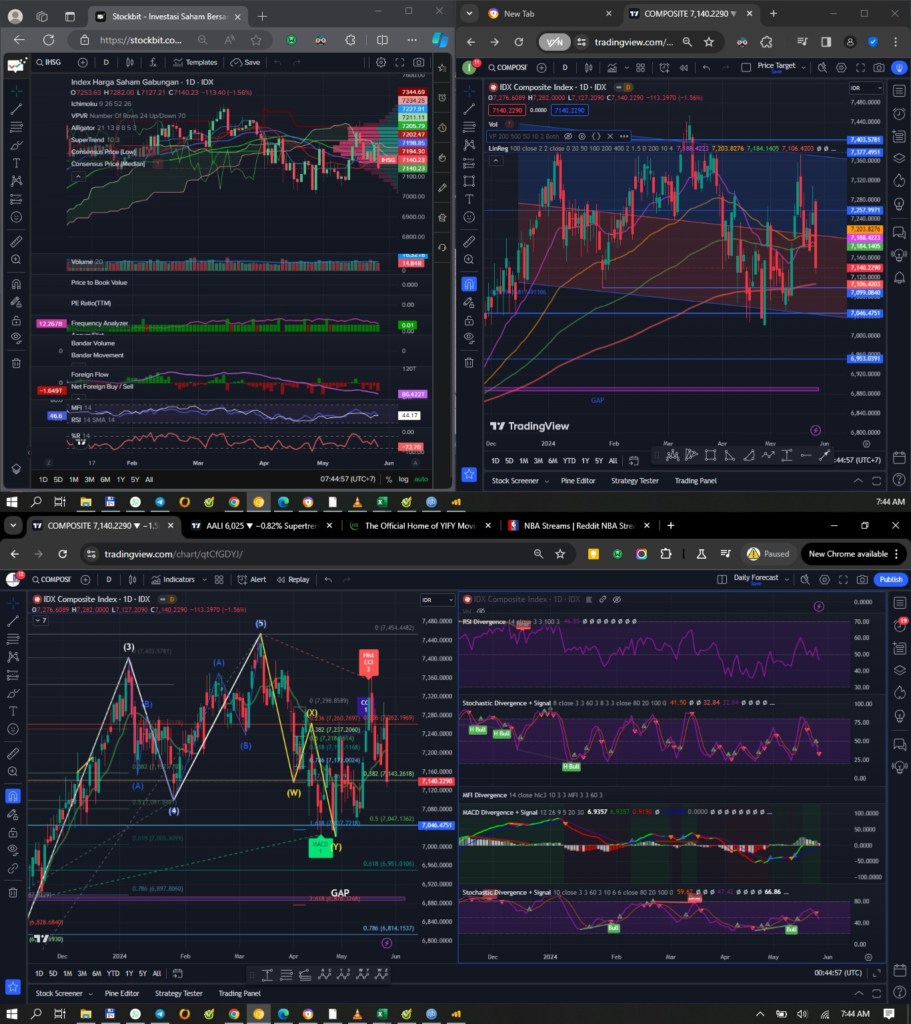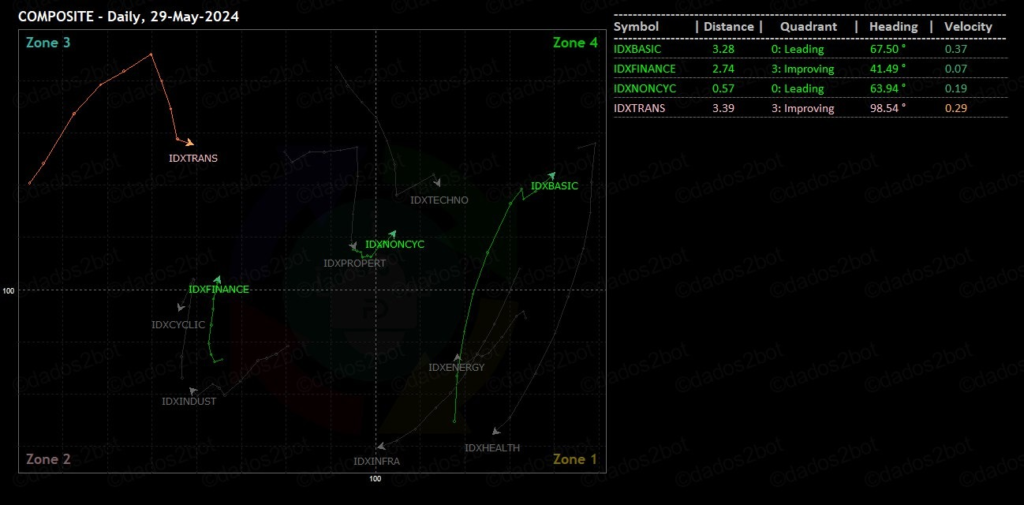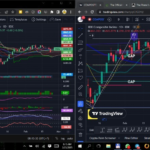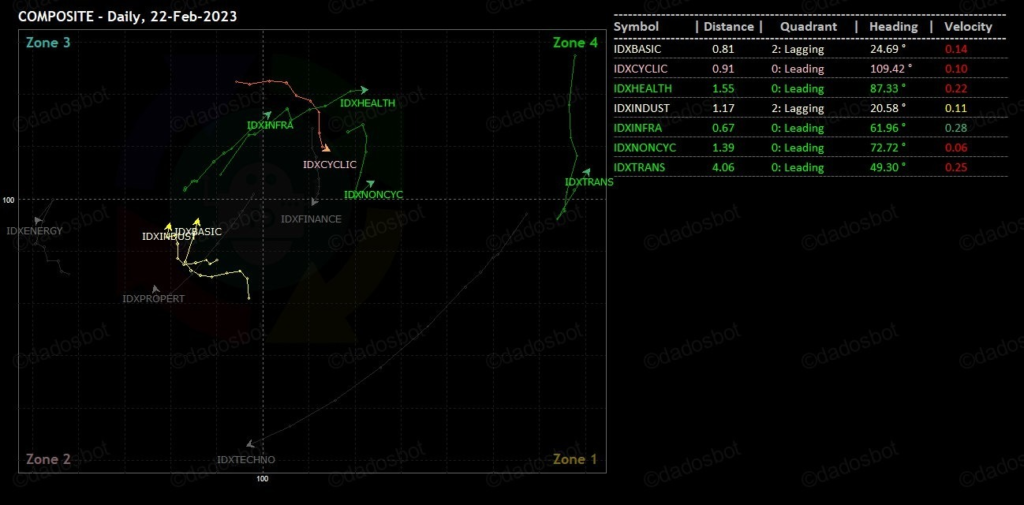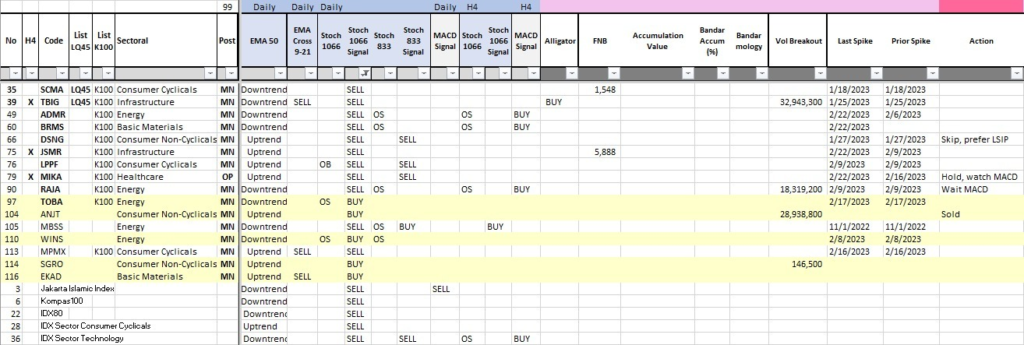Daily Analysis 20240530
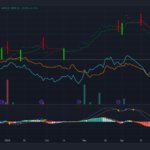
May 30th, 2024
Good morning,
S&P 500 posts first losing day in 3 as Nvidia’s climb fails to lift market, Dow drops 400 points
Stocks slid Wednesday as pressure from rising Treasury yields outweighed a continued rally in artificial intelligence darling Nvidia
Dow……38442 -411.3 -1.06%
Nasdaq16921 -99.3 -0.58%
S&P 500.5266 -39.1 -0.74%
FTSE…..8183 -71.1 -0.86%
Dax……18473 -204.6 -1.10%
CAC……7935 -122.8 -1.52%
Nikkei..38556 -298.5 -0.77%
HSI…..18477 -344.2 -1.83%
Shanghai.3111 +1.5 +0.05%
IDX….7140.23 -113.40 -1.56%
LQ45..886.18 -14.64 -1.62%
IDX30..436.64 -9.32 -2.09%
IDXEnergy..2317.81 +10.49 +0.45%
IDX BscMat1453.12 -4.75 -3.64%
IDX Indstrl..1006.86 -3.27 -0.32%
IDXNONCYC.701.45 -11.76 -1.65%
IDX Hlthcare1404.24 -11.44 -0.81%
IDXCYCLIC…722.97 -3.23 -0.44%
IDXTechno3477.11 -77.69 -2.19%
IDX Transp 1291.67 +8.14 +0.63%
IDX Infrast 1582.20 -36.84 -2.28%
IDX Finance1357.28 -10.48 -0.77%
IDX Banking1132.56 -28.29 -2.44%
IDX Property…..619 – -%
Indo10Yr.6.9178+0.0249 +0.36%
ICBI…380.0732 -0.3327 -0.09%
US2Yr.4.975 +0.027 +0.55%
US5Yr 4.619 +0.106 +2.34%
US10Yr4.619 +0.074 +1.63%
US30Yr.4.736 +0.073 +1.57%
VIX..14.28 +1.36 +10.53%‼️
USDIndx 105.1220‼️ +0.508 +0.49%
Como Indx….297.63 -2.60 -0.87%
BCOMIN………167.08 -0.26 -0.15%
IndoCDS..71.25 -0.99 -1.37%
(5-yr INOCD5) (28/05)
IDR…..16160.00‼️ +70.00 +0.44%
Jisdor.16160.00‼️ +65.00 +0.40%
Euro….1.0801 -0.0054 -0.50%
TLKM…17.48 -0.67 -3.66%‼️
( 2824)
EIDO….19.43‼️ -0.47 -2.30%
EEM…..42.32 -0.65 -1.51%
Oil…….79.31 -0.90 -1.12%
Gold..2360.90 -24.00 -1.01%
Timah..34109.00 +181.00 +0.53%
(Closed 29/05)
Nickel..20519.00 -33.50 -0.16%
(Closed 29/05)
Silver…..32.20 -0.02 -0.06%
Copper.477.40 -8.80 -1.81%
Iron Ore 62% 117.68 +0.02 +0.02%
(28/05)
Nturl Gas..2.659 -0.178 -6.27%‼️
Ammonia China.3033.33 – -%
(Domestic Price)(28/05)
Coal price 142.40 unch +0%
(May/Newcastle)
Coal price.139.90 +0.40 +0.29%
(Jun/Newcastle)
Coal price.142.10 +0.10 +0.07%
(Jul/Newcastle)
Coal price.143.35 +0.35 +0.24%
(Agt/Newcastle)
Coal price..105.25 +0.40 +0.38%
(May/Rotterdam)
Coal price.114.50 +2.80 +2.51%
(Jun/Rotterdam)
Coal price.118.05 +1.70 +1.46%
(Jul/Rotterdam)
Coal price 119.05 +1.05 +0.89%
(Agt/Rotterdam)
CPO(Agt)..4033‼️ +70 +1.76%
(Source: bursamalaysia.com)
Corn…….455.25 -7.25 -1.57%
SoybeanOil 45.88 +0.36 +0.79%
Wheat…..692.75 -7.50 -1.07%
Wood pulp..5872 unch +0%
(Closed 29/05)
©️Phintraco Sekuritas
Broker Code: AT
Desy Erawati/ DE
Source: Bloomberg, Investing, IBPA, CNBC, Bursa Malaysia
Copyright: Phintraco Sekuritas
Merah semua, emang kalo bond yield naik saham biasanya turun… Closing tadi shubuh US market bond yield naik lagi, masih jelek buat saham…
USD index up, metal2 down kecuali timah sama iron ore. oil gas down, coal up, CPO ini menarik… sepertinya AALI LSIP yang gerak
CPO Price setelah MACD buy signal, nyusul supertrend nya buy, semoga firm gerak dan bawa saham produsen CPO ikut rally
IHSG – kemaren brutal banget dibantingnya, foreign net sell gede, macd jadi rev down, MFI sw, w% down, BD juga ga nahan sih, tapi harusnya hari ini ga bantingan lagi, tipis tipis lah
Basic Materials, FInancials, Consumer Non-Cyclicals, Transportation
Stochastic Buy Signal: ITMG ISAT JSMR. ITMG JSMR big accum
MACD Buy Signal: AKRA HRUM UNTR

